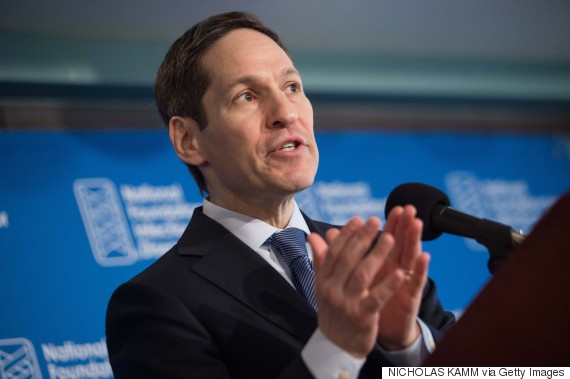UPDATED 7/26, 7/29 | Rare tropical diseases were always part of South Florida’s scene from time to time. But Zika is an extraordinary health threat — a perplexing mosquito-borne, sexually transmitted illness linked with neurological disorders and seemingly without peer in the insect world, according to scientists and health authorities. Many, though, saw it coming for years.
“Sooner or later, our mosquitoes will pick it up,” said Dr. Walter Tabachnick of the Florida Medical Entomological Laboratory in Vero Beach. “The threat is greater than I’ve seen in my lifetime.”
 The state Department of Health and federal officials said last week that roughly 2oo South Florida residents were tested for Zika after two cases in Miami-Dade and Broward counties indicated local infection by mosquito bites — possibly the first incidents of homegrown Zika in the continental United States.
The state Department of Health and federal officials said last week that roughly 2oo South Florida residents were tested for Zika after two cases in Miami-Dade and Broward counties indicated local infection by mosquito bites — possibly the first incidents of homegrown Zika in the continental United States.
Two more cases of possible local Zika were acknowledged Wednesday by health officials.
"Right now, they probably are testing mosquitoes from places where these [patients] work, play and live,” Dr. Aileen Marty, head of Health Travel Medicine at Florida International University, told the South Florida Sun Sentinel.
Gov. Rick Scott and state Surgeon General Dr. Celeste Philip were in South Florida this week for meetings with local leaders to discuss ongoing Zika preparedness and response needs.
“The federal government needs to show up and do their part,” Scott said in a meeting in Key West.
Scott is expecting $5.6 million from the federal Centers for Disease Control and Prevention after earlier authorizing $26.2 million in state funds to fight Zika.
Federal recommendations about Zika also were updated in wake of the new Florida cases.
“They are testing all their close human close contacts. They probably don't have all the results back yet, which is why [state and federal health officials] are hesitating to say anything," Marty said.
PAHO alert ineffective
Hesitation is a central theme in the fight against Zika for the federal Centers for Disease Control and the World Health Organization. So is omission, inattention, and credibility, according to a timeline of events, published research, and statements by scientists and health authorities.
The Pan American Health Organization has 48 member countries and territories, including the United States. Washington D.C. is its headquarters. PAHO issued a high-alert for Zika in May 2015. At the time, an epidemic was exploding in Brazil, host for the 2016 Rio Olympics and already sensitive to bad eco publicity. Front-line health officials for governments in high-travel areas across the Americas and Caribbean were warned in a PAHO “Epidemiological Alert.”
“The broad [vector] in the Americas combined with the high mobility of persons in and outside of this region and worldwide represent a risk for the spread of Zika virus in the Americas,” PAHO said in an online statement.
 The CDC's list about what the CDC does not know about Zika is long, especially involving pregnancy and newborns. In Brazil, roughly 1,700 children were born with brain defects associated with Zika since the disease was first identified in the country — and in the Western Hemisphere — in early 2015.
The CDC's list about what the CDC does not know about Zika is long, especially involving pregnancy and newborns. In Brazil, roughly 1,700 children were born with brain defects associated with Zika since the disease was first identified in the country — and in the Western Hemisphere — in early 2015.
But WHO, which was founded in 1948 — 42 years after PAHO (a WHO associate, technically) — waited until Feb. 1 to declare Zika a global emergency. The CDC said Zika was a national health emergency Jan. 22, then elevated the risk to “Level 1,” the highest national health threat, on Feb. 8.
Plenty of advance tremors
The 2016-17 WHO budget is $4.4 billion, including roughly $1.2 billion for communicable diseases, preparedness, and response. (Another $40 million is for "strategic communications.") The CDC budget request for 2017 is roughly $7 billion, including $2.5 billion for protection against infectious diseases. For Florida, the CDC initially siphoned $2 million for Zika when travel cases emerged. A White House news release on Wednesday — at the height of the homegrown Zika fear — said the "CDC is anticipating it will award Florida [an additional] $5.6 million in Zika funding through a CDC grant to be awarded this week.''
"When an earthquake hits, we understand the need to respond,” Dr. Tom Frieden (above photo), director of the CDC, told the National Press Club recently. “Now, imagine if you had the power to stop an earthquake. ... Using the tools of public health, [we] have the power to stop the health equivalent of many earthquakes.”
The CDC seemed to have the power in 2008. For sure, a tremor occurred involving a Colorado researcher who was infected with Zika in Senegal. Tests concluded he passed on the disease to his wife. The U.S. National Institutes of Health said the couple were the first confirmed case of an insect-borne disease transmitted through sex.
Inaction at multiple levels also put research into vaccines at least a year behind, worsened when possibly days matter for less-protected populations outside the United States. Puerto Rico is overrun with more than 5,500 Zika cases, including more than 600 pregnant women, according to the Associated Press.
Work on vaccines
“There are about a half dozen [vaccines] that are at various stages of preclinical studies,” said Tony Fauci, director of the National Institute of Allergy and Infectious Diseases. "It's concerning that we may have and likely will have localized outbreaks of Zika. ... And the thing we absolutely have to do is to prevent them from becoming sustained.”
Health authorities were aware of a sexual component involving Zika since Colorado and again in December 2013, when scientists in French Polynesia isolated the virus in the semen of a man who was ill with Zika. The CDC published those findings in February 2015 but omitted the sexual link publicly until April 13, acknowledging that Zika can cause microcephaly and other severe fetal brain defects.
Dr. Didier Musso, who managed a Zika outbreak in 2013-14 as director of the Diagnosis Medical Laboratory at Louis Malardé Institute in Tahiti, wrote in the CDC journal Emerging Infectious Diseases that his data “support the hypothesis that [Zika] can be transmitted by sexual intercourse.”
In an online interview published Feb. 3, Musso was asked whether WHO underrated Zika's reach.
"It would be pretentious on our part to say, 'yes,'" Musso said. "We had written it in 2014 in the journal Clinical Microbiology and Infection. I quote: 'We believe that the circulation of Zika in other regions of the Pacific and probably beyond is highly likely' ... For all diseases transmitted by mosquitoes, the problem is the same: to reduce mosquito populations. That goes for Zika, chikungunya, dengue, malaria, yellow fever."
In Florida’s case, Zika also threatens a tourism industry already reeling from national publicity regarding toxic blue-green algae.
“We’re learning more every day about what Zika causes and how to prevent it, but there is still a lot that we don’t know,” Frieden said.
Zika spread for the first time to the Caribbean in June 2015 — less than one month after PAHO's alert — after a 12-year-old girl in the Dominican Republic was diagnosed. At the time, Zika was not on the list of Florida’s health department most worrisome mosquito-borne illnesses.
Outside
Bitcoin mining emissions in China will hit 130 million tonnes by 2024 https://t.co/w6He7so8N2 pic.twitter.com/qYUDtBdeRK
— New Scientist (@newscientist) April 9, 2021
The Gunk Report
For the Blue-Green Algal Bloom Weekly Update from the Florida Department of Environmental Protection, tap here. For DEP's Algal Bloom Sampling Map, tap here.
What, me worry?
» "PLAYING WITH SHARKS," which recently premiered at the Sundance Film Festival, documents diving legend Valerie Taylor.